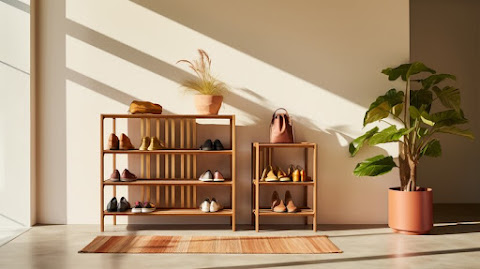Maintaining an organized and functional closet for your child can seem like a daunting task, especially as children grow quickly and their needs change constantly. Regularly cleaning and organizing your child’s closet not only ensures they have access to what they need but also instills good habits early on. So, how often should you tackle this task? The answer depends on several factors, including your child’s age, growth rate, and lifestyle. Let’s break it down.
1. Age and Growth Spurts
Children grow quickly, especially during their first few years of life. This rapid growth means their clothes and shoes can become too small in just a matter of months. Here’s a general guideline:
Infants (0-2 years): Clean out the closet every 2-3 months. Babies grow at an astonishing rate, and you’ll likely find that many outfits no longer fit after just a short time.
Toddlers (2-5 years): Review their wardrobe every 4-6 months. While the growth slows slightly during this stage, toddlers are still developing quickly, and their preferences might also change as they explore their independence.
School-Aged Children (6-12 years): Aim for a closet cleanout every 6-12 months. Growth spurts are less frequent, but it’s still important to check for outgrown clothing and shoes.
Teenagers (13-18 years): Review their closet annually, or more often during significant growth spurts. Teens often have stronger opinions about their wardrobe, so involve them in the process.
2. Seasonal Changes
Seasonal transitions are excellent opportunities to clean out your child’s closet. As the weather shifts, you’ll need to swap out clothing items to match the season. Use this time to:
Pack away out-of-season clothes.
Check for items that no longer fit.
Evaluate the condition of clothing, discarding or donating worn or unused pieces.
For instance, as summer turns into fall, you can pack up swimsuits and shorts while ensuring your child’s jackets and sweaters are still suitable.
3. Lifestyle Changes
Your child’s lifestyle and activities can influence how often their closet needs attention. For example:
Starting School or Daycare: If your child is entering a new environment, you may need to adjust their wardrobe to include uniforms, athletic wear, or other specific clothing.
Hobbies and Sports: As your child picks up new hobbies or sports, their closet may require additional storage for equipment or special attire.
Special Events: Growing kids often need outfits for special occasions like weddings, holidays, or school events. Cleaning out their closet beforehand ensures you know what they have and what you may need to buy.
4. Signs It’s Time for a Cleanout
Sometimes, the state of the closet itself will tell you it’s time for a refresh. Look for these signs:
Overcrowded drawers or hangers.
Difficulty finding specific items.
Complaints from your child about not having anything to wear.
A surplus of items that haven’t been touched in months.
5. Involve Your Child
Cleaning out the closet is an excellent opportunity to teach your child about organization and decision-making. Depending on their age, involve them in tasks like:
Sorting clothes into keep, donate, and discard piles.
Choosing favorite outfits to keep accessible.
Folding and storing items neatly.
This not only lightens your workload but also helps your child develop a sense of responsibility for their belongings.
6. Tips for Effective Closet Maintenance
To make closet cleanouts less overwhelming, consider these maintenance tips:
Use a Rotation System: Keep a small, regularly updated rotation of clothing in the main closet and store extras elsewhere.
Label Bins and Shelves: Use labels to help your child know where items belong.
Set a Reminder: Schedule periodic cleanouts on your calendar to ensure they happen regularly.
Donate Regularly: Keep a donation bin nearby to quickly sort outgrown or unused items.
7. Benefits of a Clean Closet
An organized closet offers several advantages for both you and your child:
Easier Morning Routines: Finding clothing quickly reduces stress and saves time.
Teaches Life Skills: Children learn how to maintain and organize their belongings.
Saves Money: Avoid buying unnecessary duplicates by keeping an inventory of what your child already owns.
Supports Charity: Donating gently used items helps families in need and teaches your child about generosity.
Conclusion
The frequency of cleaning out your child’s closet depends on their age, growth rate, and lifestyle changes. A good rule of thumb is to review their wardrobe every few months for younger children and at least annually for older kids. Seasonal changes and significant life events also provide natural opportunities for a refresh. By involving your child in the process and maintaining a regular cleaning schedule, you’ll ensure their closet stays organized and functional—making life easier for everyone in the family.
For More Click Here:- https://www.producthunt.com/@closetscreation









